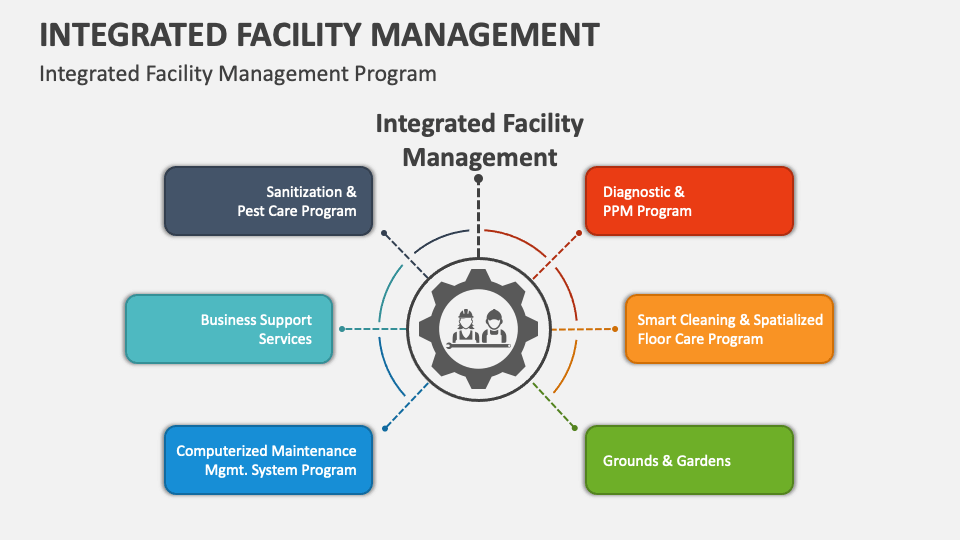Optimize Efficiency and Safety: Best Practices in Facility Management
In today's rapidly progressing landscape, taking full advantage of effectiveness and safety in facility monitoring has become a critical emphasis for companies making every effort to enhance functional performance. By incorporating wise modern technology, prioritizing maintenance protocols, and fostering a culture of security, facility supervisors can dramatically boost both efficiency and conformity. The difficulty exists in effectively applying these methods while browsing the complexities of modern workplaces. What certain methods can be employed to make certain that these initiatives not just exist together but likewise reinforce one an additional in a lasting fashion?
Embrace Smart Innovation

Applying smart sensing units and automation systems enables for precise monitoring of environmental problems, occupancy degrees, and tools performance. This data-driven approach not only informs decision-making yet likewise supports predictive upkeep, lessening downtime and prolonging asset life. Clever modern technology boosts user experience by developing adaptive atmospheres that respond to the demands of occupants.
Incorporating wise platforms also advertises sustainability efforts, such as energy-efficient illumination and HVAC systems, contributing to reduced carbon footprints. By accepting these technologies, facility supervisors can make certain that their procedures continue to be affordable, durable, and lined up with contemporary sustainability objectives. Eventually, the change in the direction of wise technology stands for a transformative action in redefining center monitoring for a much more sustainable and efficient future.
Prioritize Normal Upkeep
Normal maintenance is essential for making certain the durability and effectiveness of facility operations. A well-structured upkeep program not just extends the life of tools and facilities however also minimizes the probability of unforeseen failings that can interfere with procedures. By prioritizing routine maintenance, center managers can identify potential issues early, allowing for prompt treatments that minimize expensive fixings and downtime.
Establishing a regular maintenance timetable is vital. This ought to include regular inspections, servicing, and needed fixings for all equipment, heating and cooling systems, pipes, and electric systems. Making use of a digital maintenance administration system (CMMS) can improve this process, offering monitoring and notifies for upcoming upkeep tasks.
Moreover, cultivating a culture of liability amongst staff improves the effectiveness of maintenance initiatives. Training workers to identify and report upkeep concerns can cause positive administration as opposed to responsive actions. Additionally, documenting upkeep tasks makes certain compliance with security regulations and supplies useful insights for future preparation.
Implement Safety Training Programs
An extensive safety and security training program is essential for cultivating a secure workplace in any kind of facility. Facility Management. Such programs furnish staff find this members with the understanding and abilities needed to recognize risks, carry out safety methods, and respond successfully in emergency situations. By focusing on safety training, organizations can considerably minimize the threat of accidents and injuries, consequently boosting overall efficiency
To implement a reliable security training program, it is crucial to customize the content to the particular demands of the center and its operations. This consists of carrying out a detailed risk analysis to recognize prospective hazards unique to the office. Training ought to incorporate a variety of topics such as appropriate equipment use, emergency emptying procedures, and very first help strategies.
Additionally, it is crucial to involve workers proactively during training sessions. Making use of hands-on demos and real-life scenarios can improve understanding and retention of security techniques. Routine refresher training courses should likewise be scheduled to keep safety recognition at the forefront.
Optimize Area Utilization
Reliable space usage is a vital part of center administration that directly affects functional effectiveness and cost-effectiveness. Organizations frequently deal with underutilized or overcrowded spaces, causing ineffectiveness and increased expenditures. To optimize area application, center managers need to perform regular evaluations to identify just how areas are currently being utilized and where improvements can be made.
Executing flexible office styles, such as open workplace designs or modular furniture, can significantly enhance adaptability to altering demands. Additionally, leveraging technology, such as room management software, can offer valuable understandings into occupancy patterns and aid recognize underused locations.

Establish Clear Communication Networks
Enhancing space usage often discloses the demand for durable communication approaches within a center. Clear communication networks are essential for promoting efficient collaboration amongst staff, maintenance groups, and monitoring. By developing these networks, facility supervisors can ensure that details flows flawlessly concerning space usage, operational changes, and safety methods.
Executing a multi-faceted communication approach-- integrating electronic systems, such as e-mails and team cooperation devices, browse around here with face-to-face communications-- can substantially enhance interaction and details dissemination. Regular meetings ought to be scheduled to discuss continuous jobs, address issues, and share updates. Additionally, creating a centralized details center, such as an intranet, enables staff members to accessibility crucial records and news easily.
Furthermore, comments systems are necessary to evaluate the efficiency of interaction techniques. Encouraging team to share their understandings can result in renovations and cultivate a society of visibility. Educating programs concentrated on communication abilities can better encourage employees to convey info plainly and successfully.
Eventually, developing clear interaction channels not only makes the most of efficiency however additionally enhances safety and security by guaranteeing that every person is informed and lined up with the facility's functional goals.

Conclusion
To conclude, the integration of smart modern technology, routine upkeep, thorough safety and security training, optimized space use, and reliable interaction networks collectively improves effectiveness and safety and security in facility monitoring. By leveraging IoT and AI for real-time surveillance, organizations can lower functional expenses while making sure conformity with safety regulations. An aggressive approach to maintenance and training find out here fosters a much safer workplace setting, inevitably resulting in improved performance and business success. These best techniques function as important components for effective center management.
In today's swiftly developing landscape, making best use of efficiency and safety in facility administration has actually ended up being a vital focus for companies striving to enhance functional efficiency. By integrating smart innovation, focusing on maintenance methods, and cultivating a culture of safety and security, center supervisors can dramatically boost both efficiency and conformity.To carry out a reliable safety training program, it is vital to tailor the material to the certain demands of the center and its procedures. By establishing these networks, center supervisors can ensure that details flows flawlessly relating to space use, operational changes, and safety protocols.
Comments on “The Importance of Sustainability in Facility Management Practices”